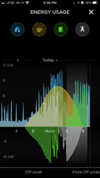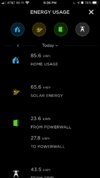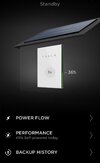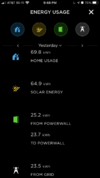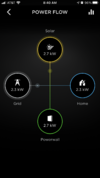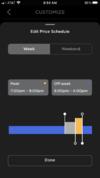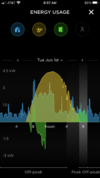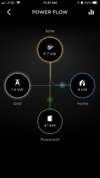We recently reached the switch over to AC season and using more than we produce. I’m about half way through year two with PW and last summer I did a lot of switching modes and reserve %.
my expectation is that balanced should discharge my PW down to the reserve before going to standby. Also it seems like my system is using the grid too much. What say you?
PS: TOU-B, 12.6 kW (dc) system and 3 PW on 10% reserve.
my expectation is that balanced should discharge my PW down to the reserve before going to standby. Also it seems like my system is using the grid too much. What say you?
PS: TOU-B, 12.6 kW (dc) system and 3 PW on 10% reserve.



